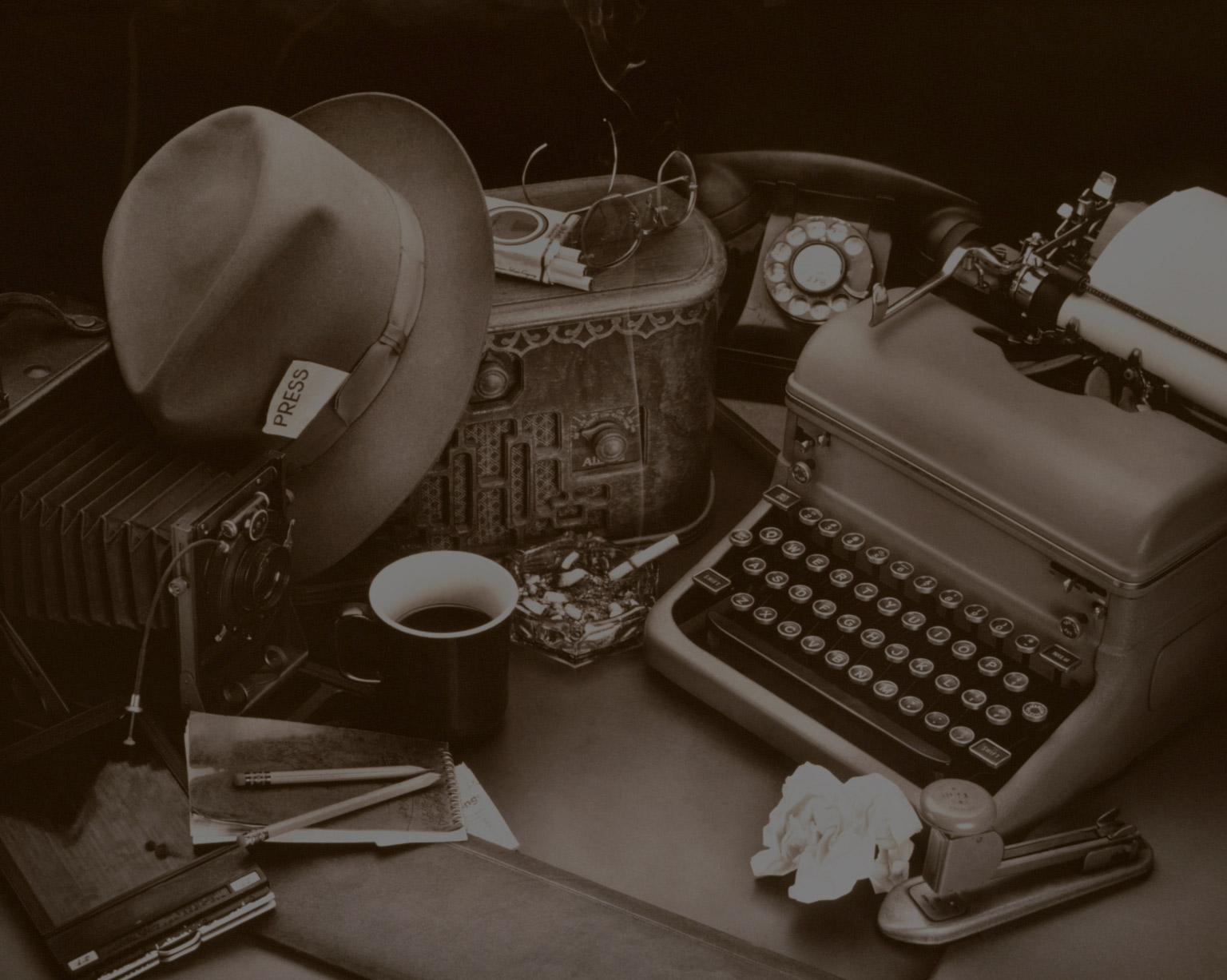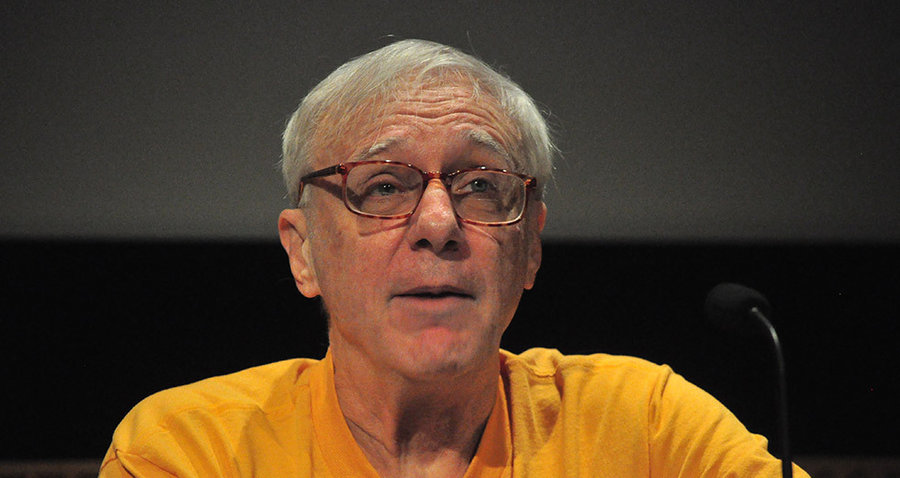Interview: Folk and pop historian Elijah Wald
Though he began his public life as a folk singer and performer, Boston native Elijah Wald has made his name as one of American music’s most provocative historians. His best-known book is also his most anomalous: The Mayor of MacDougal Street, the memoir of Greenwich Village folk legend Dave Van Ronk, Wald’s greatest mentor (the writer began taking guitar lessons from Van Ronk in the ‘70s), and the model for the Coen Brothers’ 2013 film Inside Llewyn Davis.
Wald’s 12-and-counting books explore such far-flung musical topics as accordion-led Mexican gangster ballads (Narcocorrido: A Journey into the Music of Drugs, Guns, and Guerillas), African-American insult games (The Dozens, later reprinted under the title Talkin’ ‘Bout Your Mama) and revisionist overviews of the blues (Escaping the Delta) and pop. The pop volume featured a misleadingly bomb-throwing title, How the Beatles Destroyed Rock ‘n’ Roll, that got more attention, unsurprisingly, than Wald’s scrupulously researched, musicians’-eye-level look at the byways of American popular music from the 1880s through the 1970s – which is often quite different than the way it’s been recollected. (Simon and Garfunkel, for example, were far bigger than the Rolling Stones – though good luck finding much evidence of that in most popular rock histories.)
Wald’s newest book doesn’t cover the largest amount of historical terrain, but it may be his most ambitious. Dylan Goes Electric! is a retelling of one of rock’s, and folk’s, hoariest tales: Bob Dylan shocking the squares at the 1965 Newport Folk Festival by playing a rock & roll set with electric backing – an incident that allegedly incensed folk-scene godfather Pete Seeger so much that he threatened to take an axe to Dylan’s power cord. (He didn’t.) As Wald recounts it, backed by an enormous amount of footage and written material, Dylan got booed at Newport – but he received even more cheers.
Wald’s achievement, though, isn’t to simply lay out facts, but to interpret them – to demonstrate what both the cheers and the boos meant, and why Dylan’s transformation invited each one. It’s an eye-opening, engrossing read even if you have no special fondness for the folk scene he came from. Michaelangelo Matos spoke with Wald in the basement of the Museum of the City of New York, shortly before the author’s lecture there, tied to the museum’s Folk City exhibit.
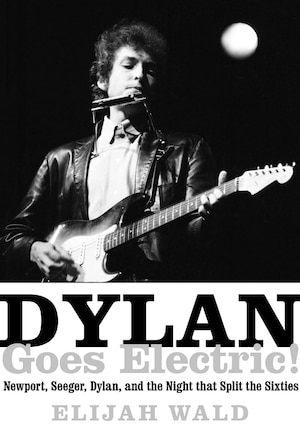
What led you to write this book?
It was February 2014. I had written that book How the Beatles Destroyed Rock ‘n’ Roll, and it was the 50th anniversary of the Beatles coming to the U.S., and a couple of people who were desperate to find a different angle were calling me up hoping I would say something horrible about the Beatles that they could use. If you’ve read the book, you know that I don’t hate the Beatles. That same week, I happened to be involved in an argument about whether or not Dylan actually got booed at Newport. It suddenly hit me: “Wait a minute – that 50th anniversary is coming up.” I make my living as a freelance writer, and it just suddenly hit me: “If I could write this book in six months and have it ready for the anniversary...”
My problem is that most of my interests are not widely salable. My interests are bachata and New Mexico music, bilingual Mexican rap, and the dozens – all sorts of things that are not easy sells. The thought that I might have a pop book that I could have out for a 50th anniversary – in a sense, own a big news moment – was the germ of it. I thought, “If there is one subject that has been sufficiently researched, that I can just read the biographies, mine what other people have done, and whip something out, that was going to be it.” I grew up in the folk scene, and I grew up on the left. My father was a major figure in the antiwar movement. So a lot of this was my world.
Once I started doing it, it turned into [something] much more complicated, much more intensive. As always, once I started going back to primary sources, it all just sounded different to me than what I had expected. Suddenly I had to explain all this stuff that I had never expected to have to explain – like that the bridge from Dylan from R&B into folk music was black folk singers. I don’t hit that one hard. But the fact that Dylan gets to Woody Guthrie via Odetta, Harry Belafonte and Leon Bibb... I know black people who did – Jackie Washington. But I don’t know any other white artist who came to folk music via those people.
Everything [with Dylan] has been preserved; everything has been shared. And you never have that.
In the book you make a lot of him as a blues singer – the term you use is “neo-ethnic,” a term for young Village musicians beginning in the late ’50s who sought to play everything from hillbilly music to blues to medieval ballads in their original style rather than the more cleaned-up versions that had previously held sway. Some of that is simply history, but I also imagine some of it came from your being a performer and knowing the forms that way.
Well, there’s that, but that’s also how people were talking about him when the first album came out. That’s who he was. When I went back and looked at that first New York Times review and find it doesn’t mention Woody Guthrie, but referred to him as singing like Blind Lemon Jefferson . . . that was the rap – the talk – on Dylan at the beginning, that he was essentially a young white guy doing blues with his own voice, not doing blues trying to sound like a black guy. And a lot of people found that very exciting. Now, to be fair, I think he got a lot of that from Ramblin’ Jack Elliott, who was covering Ray Charles. But that’s what people were saying: He’s got a really quirky, interesting new way of doing blues, and he’s throwing in his own verses, and he’s not trying to sound like anybody else, and he’s got this rock & roll rhythmic power.
Which is the other crazy thing. Peter Stampfel was the one who turned my head around on this one. He said, “When I first heard Dylan, it was the first week he arrived in the Village, and he changed my life. ‘Cause I loved R&B and I loved hillbilly music, but I thought they were two separate and incommensurate worlds. And when I heard Dylan, I realized they could be one thing.” My first reaction was, “I don’t hear that in Dylan.” And then I went back to the first album, and goddamn it, there was “Highway 51,” and he’s playing the guitar part to “Wake Up Little Susie.” And I went back and there’s a credit on that song for the guitar part went to the Everly Brothers. And I keep reading the liner notes and he’s crediting Carl Perkins and early Elvis Presley as sources – and Jelly Roll Morton, but specifically Perkins and Presley.
It’s not a new idea that he was the folk scene’s rock & roller – the guy doing folk music with rock & roll energy. That’s who he was – until Peter Paul & Mary did “Blowin’ in the Wind,” at which point most people discovered Dylan for the first time who had never heard him before. They thought of him as one of those guys who does the pretty folk music. And his old friends at the [Minneapolis folk fanzine] Little Sandy Review hung their heads in shame that he was going over to the enemy and selling out to pop, meaning doing “Blowin’ in the Wind.” And they weren’t far wrong. [laughs]
You plumbed a lot of archival material for his book.
I knew if I wanted to hear every fucking note that man ever sang from the time he left his cradle, with a tape recorder within 50 miles, all I had to do was email a few friends and check out the Internet, and I could download it all as torrent files. Everything has been preserved; everything has been shared. And you never have that. Basically, in 48 hours, I could assemble the entire library of unissued Bob Dylan, including living room tapes, chatting with high school friends – anything. That was a huge advantage.
The other huge advantage was that Bruce Jackson, who was the guardian of the Newport Folk Festival’s complete taped archives, had given them all to the Library of Congress. They were sitting there waiting for me to say, “Digitize those babies – I need to hear them.” I could go down and say, “I’d like to hear this workshop. I’d like to hear that one.” And they were all there.
How long did you spend at the Library of Congress?
I only spent, I guess, five days.
“Only” five days.
Well, a lot of that material, in bits and pieces, had been released. I was fantastically lucky because Mary Katherine Alden, an old friend, was working for Welk-Vanguard Records to compile the Newport CDs in the ’90s, for which she listened to all of those tapes and put together a concordance. She was happy to answer any questions I had. If I called up and said, “I need to know every time anyone sang a Dylan song at any Newport Folk Festival between ’63 and ’65,” she’d say, “Call me in 24 hours,” and she’d give me a list.
You know, we’re living in a great world for finding stuff. Facebook, man! If I want the program for the 1966 Newport Folk Festival scanned, all I have to do is say that on Facebook and someone I know will have it and scan it for me and I’ll have it tomorrow.
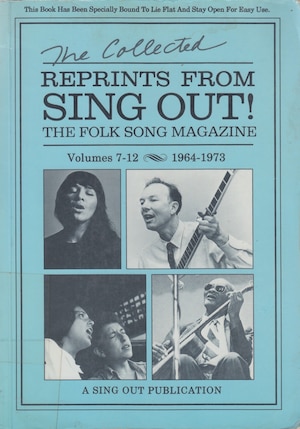
I am somebody who haunts used bookstores. At some point I walked into one and for a buck I picked up a 1965 Newport Folk Festival program. I have no memory of having it until I started this project and perused my boxes to see what was useful, and there it was. There’s so much in my boxes. When I was 12 years old I was strumming guitars and singing folk songs, and at one of my parents’ parties someone said, “Oh, you like that stuff?” The next thing I knew, in the mail I had a box with the complete Sing Out! magazine from 1960 through 1967. Because he’d been into that and received them and he wasn’t interested anymore, and here was this kid who’d be excited. I happened to grow up in a black hole for this stuff, where no one was interested, and simply being interested in this stuff meant that people gave you stuff.
Dylan Goes Electric! seems like a culmination, in that you were able to bring in a lot of the historical depth that your other books prepared you for.
Well, the Beatles book – I spent three years on that book. I had been doing interviews for the Robert Johnson book, and found myself saying, over and over and over, “Knowing Robert Johnson and not knowing Leroy Carr is sort of like knowing the Sir Douglas Quintet and not knowing the Beatles.” And it suddenly hit me that, in fact, that the Beatles analogy for the 1920s was not Leroy Carr – it was Paul Whiteman, whom I had never heard. I decided if I was going to spend the rest of my life writing about American music in the 20th century, it behooved me to know what the fuck I was talking about. The fact that I could do this book in six months comes out of the fact that I knew the trends already. I knew the major players. When somebody said, “Such-and-such was on the radio,” I knew such-and-such and it was on my computer already.
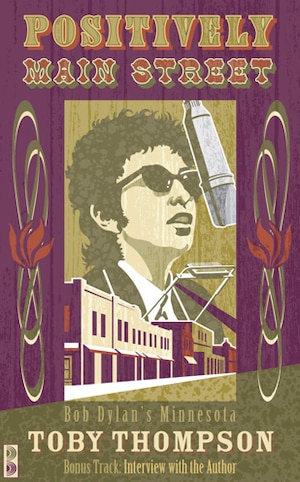
What was the biggest surprise to you while researching the book?
Actually, this is the first time I’ve ever done a project that has made me completely revise a previous opinion. For a while, though I wasn’t writing about it at all, I was listening to “Love and Theft” and Modern Times again and again. It just fitted so much with the Dylan I was writing about, who was a musician, not a poet. What’s brilliant to me about those records is just how much he loves the music I love, be it country, blues, honky-tonk, Hoagy Carmichael. When I first heard those records, I thought, “These are just pastiches of a bunch of old stuff. I don’t need this.” This time around I went, “These are pastiches of a bunch of old stuff – I love this.” [laughs]
There was writing [on Dylan] that completely startled me. Oh God – Positively Main Street. I had never read that book; I had never heard of that book; I had never seen that book cited in indexes.
What is Positively Main Street?
Yeah, exactly! [laughs] It was published in 1967, compiled by a guy who had first published a series of six articles in the Village Voice who had gone to Hibbing and met everyone and had an affair with [Dylan’s teenage girlfriend] Echo Helstrom. People quote him – his quotes show up in [Behind the Shades by] Clinton Heylin. But it’s a really fun book: “My journey to Hibbing to try and find Dylan” – but it’s ’67! You would think it would be foundational. I have no idea why all of us Dylan nuts don’t know it. It’s a really fun book.
Maybe it’s because he slept with one of his sources?
He was trying to learn what it was like to be Bob Dylan! [laughs]
That seems like an extreme way to do it.
I don’t know – it sounds to me like everybody was fine with the whole situation. The point is, it’s a good book, and it’s a book that I’m staggered that I didn’t know about.
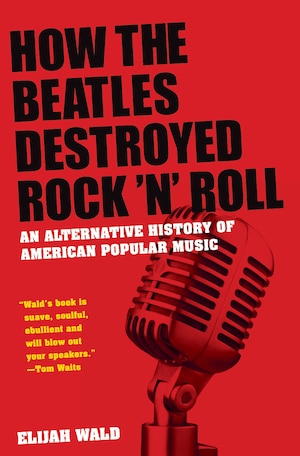
Have you ever wanted to change the title of How the Beatles Destroyed Rock ‘n’ Roll in reprint, the way you did with The Dozens?
I wouldn’t have changed the title of The Dozens – that was their idea. There was a moment when I considered changing the title of the Beatles book and they said, “Nope! Don’t you dare!” [laughs]
I had that title before I wrote the book. But yes, it turns off a lot of people. My logic was, a lot of people who will be interested if they pick up this book and would otherwise never pick it up, will pick it up because of this title, and the Paul Whiteman people will learn eventually by word of mouth that this one’s worth them looking at. Whereas the Beatles people would probably never learn of it by word of mouth if I called it “American Pop From Sousa to Soul.”
As someone immersed in music writing, I saw the title and knew exactly what it meant: The Beatles created the schism by which fun “rock & roll” became self-conscious “rock.” People like Robert Christgau have said it for years. But most people don’t get that.
Yeah. After a while, I started saying, “Somewhere in your family you have an uncle or someone who was playing in a rock & roll band in 1962-63. Ask them what the title means; they’ll be able to explain it to you” – because for them, the Beatles were the apocalypse.
My ability to understand people talking quickly in Georgia over a bad sound system was not everything it might be.
Speaking of The Dozens, I heard you recently judged a dozens contest?
It was on July 10. It was the best gig I’ve ever been offered: I was judging an insult contest at a boxing ring in Atlanta. [pause] Everything about that sentence is good. [laughs] This guy named Ralph C had decided that insult competitions should become a sport, and he wants to have an NFL of roasting. This was their tryout first round. I had the pleasure of being one of three judges – with a local guy who runs rap open-mikes, and one of the writers for The Boondocks television show – in a barely air-conditioned gym, judging one-on-one insult bouts for three or four hours, late at night.
It was fun! It was a thousand-dollar prize, so there were people coming in from out of state. People were serious. Everybody [did] three minute competitions – went head to head and insulted each other. Honestly, none of it was world-class this time around. I think as a concept it has potential. Not to mention that I’m a white guy from Boston: My ability to understand people talking quickly in Georgia over a bad sound system was not everything it might be.
But going in, Andre, the guy from The Boondocks, said, “You won’t have any problem. It’s pretty clear who’s winning in one of these things.” And he was absolutely right. Some people just commanded the stage, and some people just didn’t.
When did you first hear from the Coen Brothers?
[laughs] That depends on how you look at it. The book got optioned for a movie – we all assumed it was going to be a History Channel bio. The option was picked up again after two years, and suddenly I got an email: “I hear the Coen Brothers are doing a movie based on Dave Van Ronk.” I called my agent and said, “Is this us?” And he said, “I don’t know – I’ll check.” He called me back: “Yeah! It’s us!”
I said, “Get in touch. Tell them I want to audition – I want to be in the movie.” So I did an audition reel – I didn’t get the part. But they gave me the script; they gave me a couple parts to audition for. I actually did that because years ago there was talk of a Phil Ochs movie. I think Sean Penn wanted to be Phil. And Van Ronk immediately called his agent and said, “Get in touch with them. Find who you need to find, tell ‘em I’ll shave my beard if I can play Albert Grossman.”
Dave Van Ronk was kind of a second father to me.
Grossman was the most infamous person in the folk scene. He managed Dylan and put together Peter, Paul & Mary; he was also a notorious wheeler-dealer. One of the best scenes in Dylan Goes Electric! is when he gets into a fistfight backstage at Newport ‘65 with . . .
. . . Alan Lomax! “God versus mammon”! Everybody’s an eyewitness to that one, yes indeedy! That was one of the classic Newport stories. Eric Von Schmidt used to talk about that gleefully. [Arhoolie Records founder] Chris Strachwitz told me that Willie Dixon acted the whole thing out at the blues house afterwards. [laughs] Everybody enjoyed that.
After The Mayor of MacDougal Street was published, did you get any ghostwriting offers?
Yeah, a couple people suggested they’d like to do books. The one I have to say tempted me was Ramblin’ Jack Elliott. But I know Jack enough that I had a sense of what would be involved in that one – and I explained what would be involved. I think we could’ve done it, but they didn’t see it the way I saw it. But that’s about it.
Honestly, Dave Van Ronk was kind of a second father to me. That project was my way of dealing with his death – to just immerse myself in Dave Van Ronk for a year and, what can I say, keep him alive, get closure – however you want to look at that. Also, he was without question the most widely read and wise and intelligent human being I’ve ever known. And I grew up in a household of professors and just went to grad school. I keep thinking I’ll sometime meet someone with as well formed an all-around mind as Dave Van Ronk, and I haven’t yet. So that was a special one for me.
